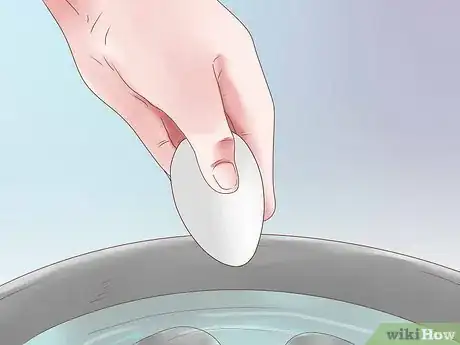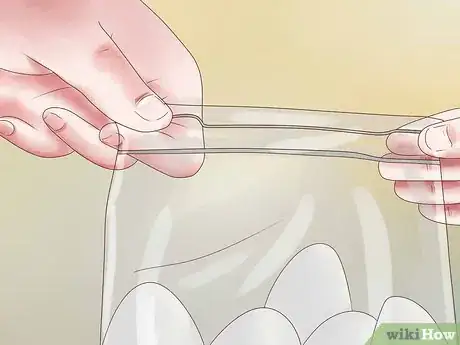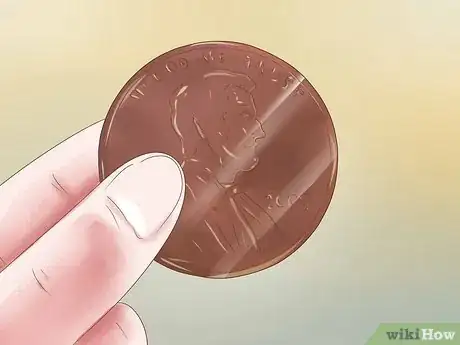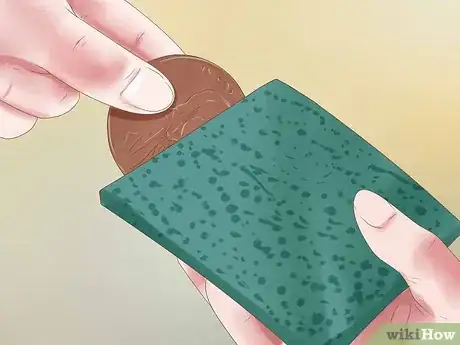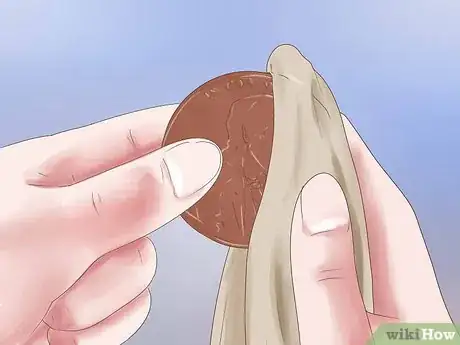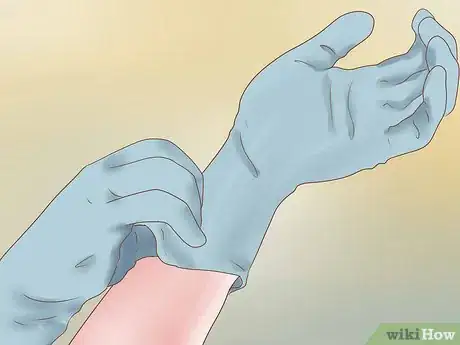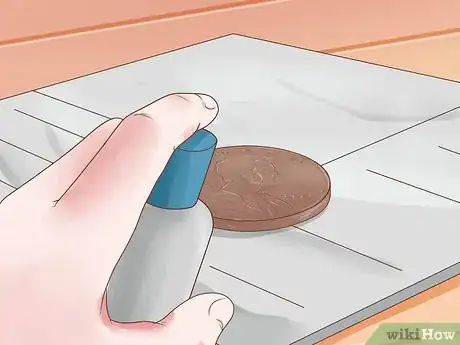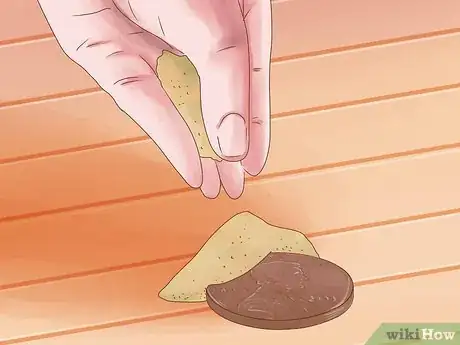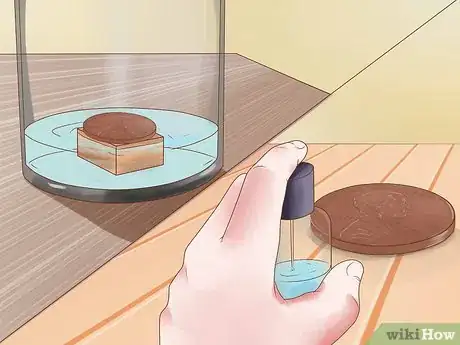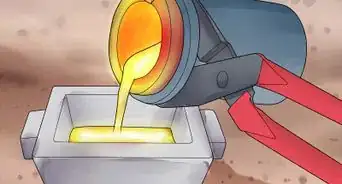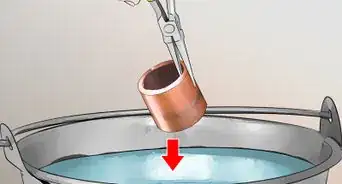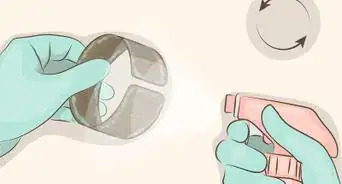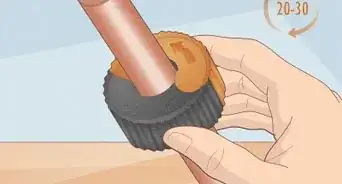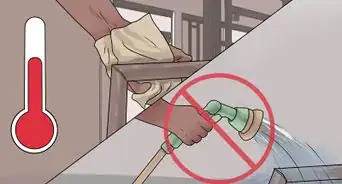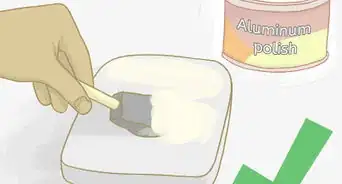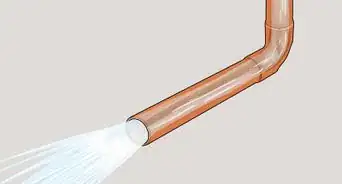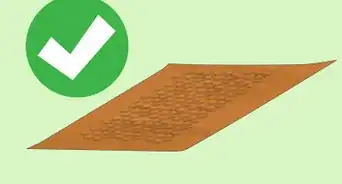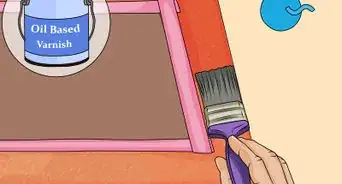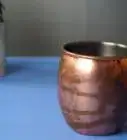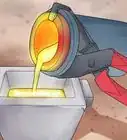wikiHow is a “wiki,” similar to Wikipedia, which means that many of our articles are co-written by multiple authors. To create this article, 16 people, some anonymous, worked to edit and improve it over time.
wikiHow marks an article as reader-approved once it receives enough positive feedback. This article received 11 testimonials and 88% of readers who voted found it helpful, earning it our reader-approved status.
This article has been viewed 695,553 times.
Learn more...
If you want to add a rustic or antique look to copper jewelry or household items, add a patina to copper by oxidizing the copper yourself without buying an expensive kit from the crafts store. These methods can age copper to a darker brown, or create a more noticeable green or greenish-blue patina. Each method produces slightly different appearances, so feel free to experiment with several. Use the liquid solution method if you want more control over the result.
Steps
Creating an Aged Appearance with Boiled Eggs (Light or Dark Brown)
-
1Hard boil two or more eggs. Two or three eggs should be plenty unless you have a large amount of copper to oxidize. Place them with their shells intact in a pot of water and bring to a boil for at least ten minutes. Don't worry about over-boiling them. In fact, that over-done greenish ring and sulfur smell is exactly what you need, since the sulfur will alter the appearance of your copper.
-
2Use tongs to place the eggs in a plastic bag. Transfer the eggs into a plastic bag, preferably one that can be sealed, such as a ziploc. Use tongs or another utensil to pick up the eggs, since they will be hot. If you don't have a bag that can fit your copper object comfortably, use Tupperware, a bucket, or any other container that can be sealed shut or have a lid placed over it. Large containers will require a large amount of eggs.
- Ideally, your container should be transparent so you can check on the appearance of your copper without having to open the container.
Advertisement -
3Mash your eggs into pieces. Seal the bag halfway closed before you begin to avoid spraying egg through the opening. Hit the eggs through the plastic bag with a spoon, the base of a cup, or any heavy object. Crush the shell, white, and yolk until it is mashed into many pieces.
- Don't seal the bag all the way, or the air pocket will make it difficult to break the egg.
-
4Place your copper objects on a small dish. This will prevent them from coming into contact with the eggs. Besides letting you avoid washing the egg off afterward, this will also prevent spots where the egg touches the metal.[1]
-
5Put the dish inside the bag and seal it closed. Place the dish containing your copper object inside the plastic bag. It does not matter whether it is near the mashed up egg pieces, as long as they are not touching the copper. Seal or tie the bag closed to trap the sulfur fumes inside, or attach the lid if you are using a container. The bag will expand due to the heat of the eggs, but this shouldn't be enough to break most plastic bags.
-
6Check regularly to see if the desired appearance has been reached. You may start to see results as soon as 15 minutes after you put the copper in the bag, but the copper often takes 4–8 hours to reach a dark brown appearance.[2] The copper should grow darker the longer it remains in the bag, and large surfaces will acquire an aged, uneven appearance. Remove when you've achieved the look you were going for.
- Wash the copper item afterward to remove any pieces of egg and to see what the item looks like when clean.
Oxidizing with Liquid Solutions (Green, Brown, or Other)
-
1Scrub the copper item with an abrasive pad and water. Stroke the copper item in a linear motion to give the metal an even grain so the patina will be smooth and not patchy. You may skip this step or experiment with cleaning portions of the copper if you are trying to create an art piece with a contrasting new and aged appearance.
-
2Clean the copper piece with a mild dish detergent and rinse the soap off thoroughly. Remove soap, oils and film from the copper. Wipe and pat the copper item dry with a soft cloth.
-
3Prepare a solution according to the color you want to achieve. There are many possible solutions you can use to oxidize copper, depending on the final color you are trying to achieve. Several are listed here using common household items or items available at a drug or grocery store.
- Warning: always wear rubber gloves and work in a ventilated area when handling ammonia. Safety glasses and a respirator mask are recommended. Be ready to wash your skin or eyes with running water for fifteen minutes in case of spills.
- To create a green patina, mix 2 cups (480 mL) white vinegar, 1.5 cups (360 mL) pure non-detergent ammonia, and 0.5 cups (120 mL) non-iodized salt. Mix in a plastic spray bottle until the salt dissolves. Use less salt to reduce the amount of green in the patina.[3]
- For a brown patina, mix baking soda in a spray bottle full of hot water until additional baking soda will not dissolve.[4]
- You may buy a commercial antiquing solution and follow the instructions on the packaging to achieve the desired color. Liver of Sulphur is commonly used for copper.
-
4Place your copper item outdoors or in an indoor area with good ventilation before treating it with the solution. Spread newspapers underneath it to protect the surface it is standing on from spills.
-
5Spray the copper piece at least twice a day. Spray the copper with the solution and wait an hour to see if it develops. If it has, you can continue to spray hourly, focusing on portions where the patina didn't hold. Otherwise, spray twice a day until the patina becomes visible. Leave it outside during this time to speed up the oxidization.
- If you want to have more control over exactly where and how the patina forms, scrub with a scotch brite pad, brass brush, or cotton swab after spraying.[5] Wear gloves and safety glasses for this if your solution contains ammonia, acids or other dangerous chemicals.
- If you are in a low humidity area, place a plastic bag or sheet over the item to keep in moisture. Use a frame or drape it between larger objects so the plastic does not come in contact with the copper.[6]
Oxidizing with Other Methods
-
1Make your copper green and blue with Miracle Gro. You can use concentrated Miracle Gro plant fertilizer to oxidize your copper quickly. Mix approximately one part Miracle Gro with three parts water for a bluer patina, or with red wine vinegar for a greener one.[7] Apply with a spray bottle or rag, doing so unevenly if you want to create a more natural, aged appearance. It should develop a patina within 30 minutes, and reach a more permanent state within 24 hours.
-
2Bury copper in white vinegar. White vinegar can produce a green or blue patina on copper, but requires another material to hold the moisture close to the metal. Let the copper soak in a mixture of white vinegar and salt, or bury it in sawdust or even crushed potato chips, then soak the mixture with vinegar.[8] Place in a sealed container for 2–8 hours, checking on the color regularly, then remove and air dry. Use a soft brush to gently remove solid materials.
-
3Create a bright blue color using ammonia vapors and salt. Fill a container 1/2 inch (1.25cm) deep with pure non-detergent ammonia, outdoors or in a well ventilated area. Spray the copper with saltwater, and place it above the level of the ammonia, on top of a wooden block. Cover the container and check back every hour or two until the copper is dark brown with blue hints. Remove from the bucket and air dry until a bright, blue color develops.
- Warning: always wear gloves and safety glasses when handling ammonia. Do not use the container that held ammonia to hold food or water.
- The more salt you use, the more noticeable the color will be.
Community Q&A
-
QuestionIf you have a cabochon in copper wire, will these processes damage the finish on your cab?
 Community AnswerIt is unlikely to damage the finish on the cab. It will damage the whole stone as it will affect its structure. It totally depends on the type of stone you are working with. The softer the stone, the more porous it is, so there is a bigger possibility to ruin it. To avoid any issues, it's best not to soak your pieces in patina solutions, but apply them with a brush.
Community AnswerIt is unlikely to damage the finish on the cab. It will damage the whole stone as it will affect its structure. It totally depends on the type of stone you are working with. The softer the stone, the more porous it is, so there is a bigger possibility to ruin it. To avoid any issues, it's best not to soak your pieces in patina solutions, but apply them with a brush. -
QuestionI want to patina an item that is too big to soak and I don't think a liquid will work. The item is a plastic ceiling fan blade. I want to cover it with copper leaf. Is there a way to do this?
 Community AnswerYou can buy paints with copper (and other metal powder) in them, paint on a few layers of the paint and let it dry, then you can patina the object using a shop bought solution or make your own (vinegar, salt, ammonia, etc.).
Community AnswerYou can buy paints with copper (and other metal powder) in them, paint on a few layers of the paint and let it dry, then you can patina the object using a shop bought solution or make your own (vinegar, salt, ammonia, etc.). -
QuestionI soaked my copper in vinegar/salt. After 24 hours it had a lot of turquoise and green patinas, but it all wiped off, leaving dull copper. Why did it wipe off?
 Community AnswerA patina is not like a paint. It wears off. It always wears off. You can seal it with microcrystalline wax, but it won't stop a patina from eventually wearing off.
Community AnswerA patina is not like a paint. It wears off. It always wears off. You can seal it with microcrystalline wax, but it won't stop a patina from eventually wearing off.
Warnings
- Never mix ammonia with bleach or other home-cleaning products.⧼thumbs_response⧽
- When using ammonia, especially indoors, make sure there is good ventilation. Be careful not to put ammonia in contact with the eyes.⧼thumbs_response⧽
Things You'll Need
- Abrasive scrub pad
- Mild dish detergent
- Spray bottle
- Sealable container
- Copper sealant or wax (recommended to preserve patina afterward)
One or more of the following:
- Water
- Salt
- Vinegar
- Miracle Gro
- Baking soda
- Ammonia
References
- ↑ http://jewelrymakingjournal.com/how-to-oxidize-sterling-silver-and-copper-with-boiled-eggs/
- ↑ http://www.squidoo.com/oxidizecopperbrass
- ↑ http://www.fxl.com/lighting-basics/how-patina
- ↑ http://www.fxl.com/lighting-basics/how-patina
- ↑ http://www.squidoo.com/oxidizecopperbrass
- ↑ http://www.fxl.com/lighting-basics/how-patina
- ↑ http://www.itsnotworkitsgardening.com/2011/07/creating-copper-patina-fast.html
- ↑ http://jewelrymakingjournal.com/vinegar-and-salt-patina/
About This Article
To oxidize copper, begin by scrubbing the copper with an abrasive pad and water. This will help to achieve an even patina, so skip this step if you want something more patchy. Then, clean the copper with soap and water and pat it dry with a soft cloth. To achieve a green patina, spray your copper with a mix of 2 cups vinegar, 1.5 cups ammonia, and 1/2 cup of salt. For a greenish blue effect, spray your copper with Miracle Grow. To learn how to create an aged appearance in copper, read on!
